In conversation with writer, editor Payal Dhar
Posted by Remya Padmadas on July 04, 2017Payal Dhar is a writer and editor. She writes on computers, technology, books, reading, games and travel, and has written on sport in the past. She also writes fiction for children and young adults, and has a number of books under her belt. You can read more about her on her website: http://writeside.net. Payal edited a number of titles from our set of STEM books, and we caught up with her about her experience.
You commissioned and edited picture books that explored science, technology and engineering topics. As an Editor, how did you make these stories appealing for early readers?
Well, it’s probably fairer to say that we tried our best to make them appealing for young readers—whether we succeeded or not is quite another story. I was lucky to be able to entice a bunch of enthusiastic, eperienced and talented writers to work with, who understood what we were trying to achieve and were fully on board with it. That really made my work easy. The illustrators also played their role in making the stories well rounded and entertaining. I think that what we were all (writers, illustrators, editors and you good folks at StoryWeaver) completely clear about from the start was what we didn’t want, that is, no lessons disguised as stories. The rest was (relatively) easy.

What did you enjoy most about the process?
Figuring out a way to stick to a subject or broad theme without being that aforementioned lesson-disguised-as-story. The ones I enjoyed most were what I call the ‘fictionalised non-fiction’, especially Roopa Pai’s Bonda and Devi, Anil Menon’s Manikantan Has Enough and Richa Jha’s Gul in Space.

What were the challenges?
In the first year of commissioning I did struggle with finding a balance between keeping things simple and not making them simplistic because of the particular demographic that Pratham Books caters to. I couldn’t exactly say that I’ve figured it out since, but it has certainly become a bit clearer. The other challenge, of course, that always crops up in projects of this sort, was dealing with difficult authors. But that was a very small minority, so no blood was shed. :)
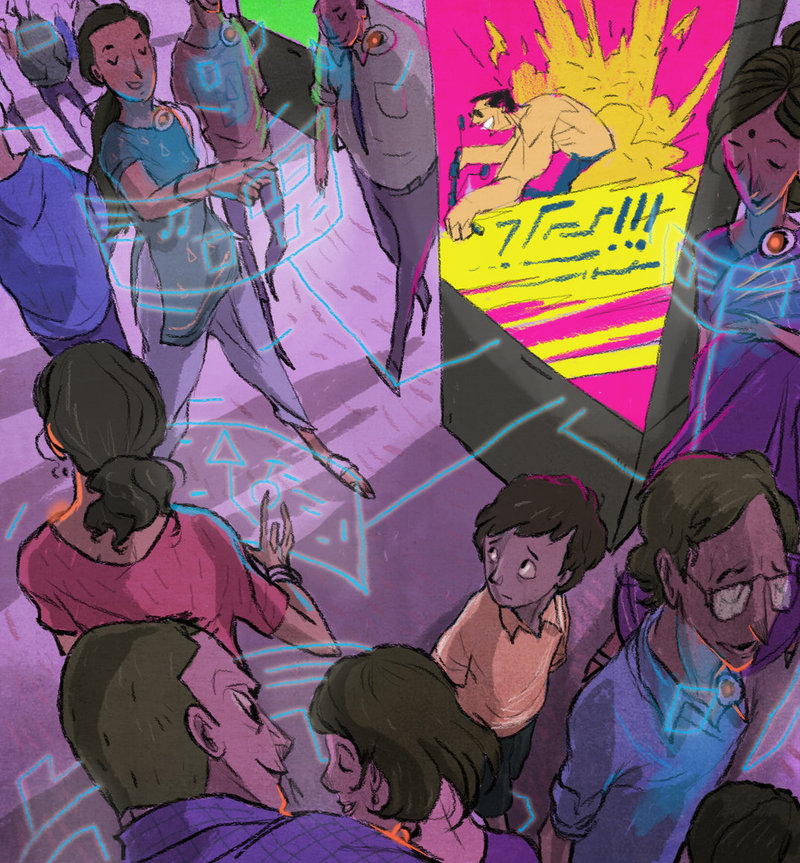
Which are your favourite STEM books for children?
Among others, Esther Porter’s Peeking under the City; the Nick and Tesla books by Bob Pflugfelder; and David Macaulay’s The Way Things Work.
The books that you’ve worked on are so diverse in themes, style and structure. Tell us a little about working with so many different writers and your approach as an editor.
I was pretty privileged in working with writers who were already pretty experienced—you could say I had it easy in that regard—so there was little or no hand-holding required. Most of the writers understood the brief immediately and came up with brilliant ideas of their own. Most of them were able to self-reflect and improve on their own work as well, and this was critical in the revisions. All in all, despite a few roadblocks, I had a pretty uncomplicated time of it.
Read our STEM titles in English and a range of Indian languages for free on StoryWeaver.
Be the first to comment.Finding the Math in Storybooks for Young Children
Posted by Remya Padmadas on April 18, 2016It's important to share engaing books with children that have math learning as a primary goal.
Via MindShift.
When reading books, it’s important to realize that math is a broad subject. Clearly, a counting book or a shape book describing circles and squares are both explicitly about math, in the sense of the kind of formal math we usually learn in school. Although not explicitly about school math, Goldilocks entails relatively complex math ideas— order and correlation. Other storybooks deal in an informal way with patterns, spatial relations, measurement, addition and subtraction, and division — all of which are “math.” Indeed, it would be hard to find a non-math storybook that does not include everyday math in this broad sense. In fact, ordinary storybooks may contain more interesting math than do explicit math storybooks (and textbooks, too!).
This in turn raises the question of the type of math you want your child to learn — school math or embedded math? The answer is both. Children need to memorize the counting words, but also need to know that their order specifies relative magnitude. They need to memorize 1, 2, 3, 4, but also need to know that 3 is a bigger number than 2 because it comes after 2, but it is also a smaller number than 4, because it comes after 3. Memorizing symbols is not enough, just as knowing the everyday story is not enough. Eventually, the child needs to know how the informal ideas provide the meaningful basis for the formal math.
Read books that you both find interesting, amusing and full of wonder, books that will grow the child’s budding love of reading. Bypass boring stories, even if you think they are “educational.” Enjoy the story!
You can read the rest of the article here.
StoryWeaver recently created a series of openly licensed, digital-first books that celebrated math concepts from the simple to the slightly abstract. Created under an Oracle Grant, these books were guest edited by renowned children's author Roopa Pai and dealt with every day fractions, Fibonacci series, dates and distances small and great. Roopa wrote one of the stories, 'How Old is Muttaji?' - a delightful concoction of math, history and culture!
The books were part of a larger set of STEM books that were created to fill a gap in children's publishing in India: engaging non-fiction books and joyful, non-fiction narratives.
How Far is Far by Sukanya Sinha and Vishnu M Nair
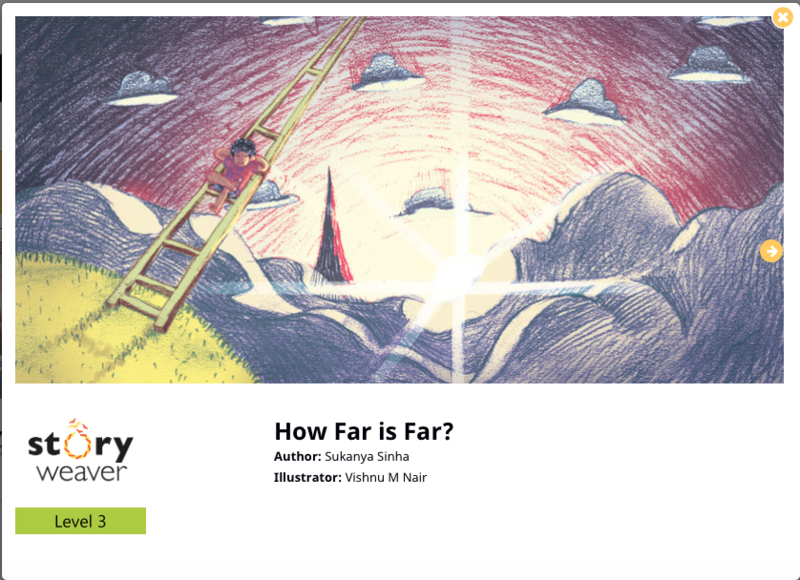
If you thought your friend's house on the other side of town was far away, you have clearly not read this book. Climb the Magic Math Ladder to get from where you are to the top of Mount Everest, to Kashmir, to the moon, the Sun, and ultimately, to the edge of the Universe, which is very, very, VERY far away indeed. Ready, steady, go!
Dum Dum-a-Dum Biryani by Gayathri Tirthapura and Kabini Amin
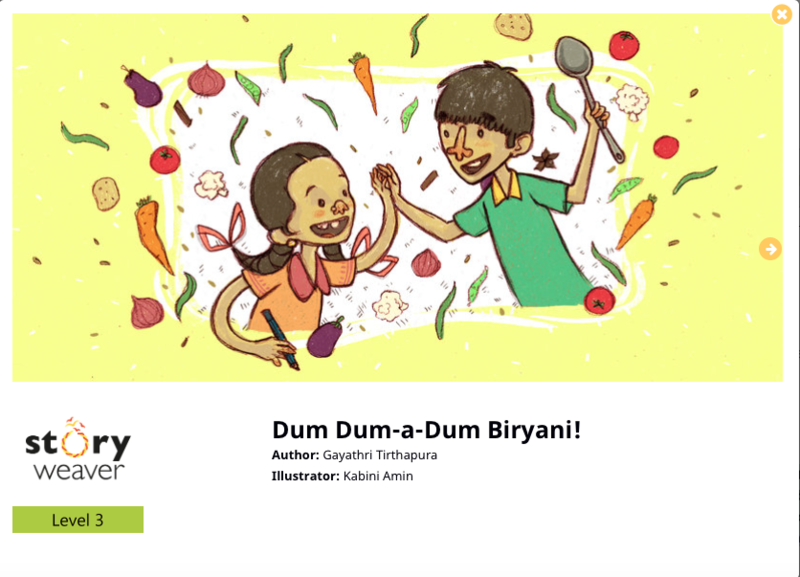
Basha and Sainabi are in a panic. Ammi is ill, and Saira aunty has just announced that she is arriving for lunch - with 23 other people! Budding chef Basha thinks he can cook Ammi's Dum Biryani, but her recipe only makes enough for 4 people. Math wiz Sainabi jumps in to help, declaring that she knows how to turn a 4-person recipe to a 24-person recipe. Do the siblings succeed in serving up a truly Dum Dum-a-Dum biryani? Read this book to find out!
The Fascinating Fibonaccis - by Shonali Chinniah and Hari Kumar Nair
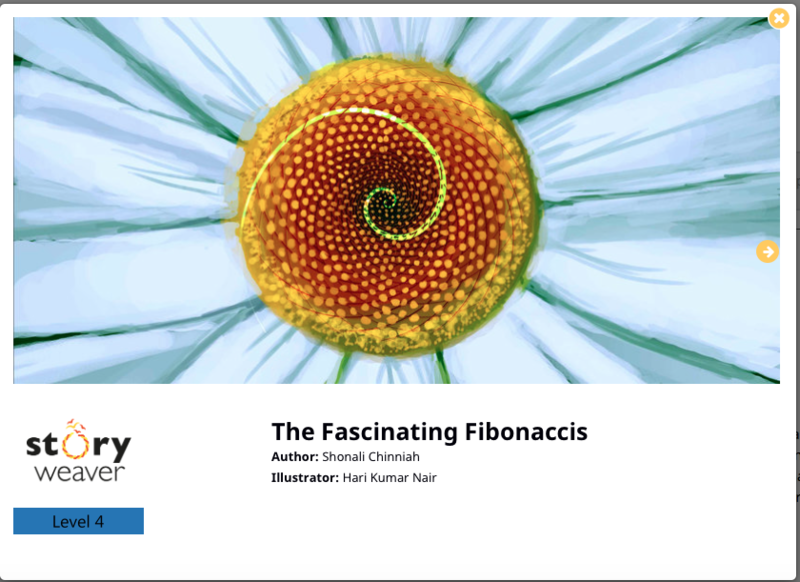
Almost a thousand years ago, an Indian scholar called Hemachandra discovered a fascinating number sequence. A century later, the same sequence caught the attention of Italian mathematician Fibonacci, who wrote about it. The Fibonacci sequence, as it began to be called, was straightforward enough - what made it fascinating was that this particular set of numbers was repeated many, many times in nature - in flowers, seashells, eggs, seeds, stars... Find out more inside this book!
How Old Is Muttaji? by Roopa Pai and Kaveri Gopalakrishnan
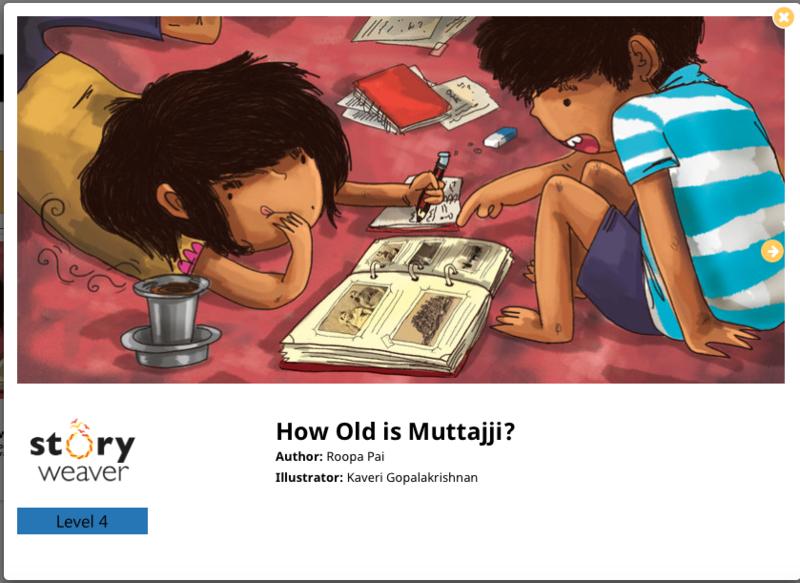
Putta and Putti know that Muttajji is really, really old. But exactly HOW old is she? Join the twin detectives on an exciting mathematical journey through Muttajji's memories and India's history in their quest to crack the big question.
Have a look at these digital books, which are all available to read, download and print for sharing absolutely free! The books are also available in a number of Indic languages, and if you'd like to translate the book in to a language you're fluent in, you can use our translate tool!
Be the first to comment.Pratham Books at 'Let's Read! E-book Hackathon' in Cambodia
Posted by Yamini Vijayan on September 25, 2017Over the last couple of years, our team at Pratham Books has been focussing on creating simple and engaging picture books that explore STEM (Science, Technology, Engineering and Math) concepts. There is a dearth of interesting information books for early readers in India - especially across Indian languages – and we have actively been trying to bridge that gap. Within two years, we have created around 300 multilingual STEM books (available for free on www.storyweaver.org.in), and also set up STEM libraries around the country.
Having had such a strong focus on STEM, we were delighted to be invited by The Asia Foundation to participate in their e-book hackathon in Phnom Penh, Cambodia, which was aimed at creating openly-licensed STEM books in their local language. Like in India, there are very few children’s books in Cambodia that explore STEM topics imaginatively, and the hackathon was a step towards reducing that gap. Over two days (Aug 19-20, 2017), several local writers, illustrators and designers collaborated to make picture books that were centred around STEM topics. The ‘Let’s Read E-book Hackathon’ was also an attempt at identifying young professionals in the publishing sector, and nurturing their skills.
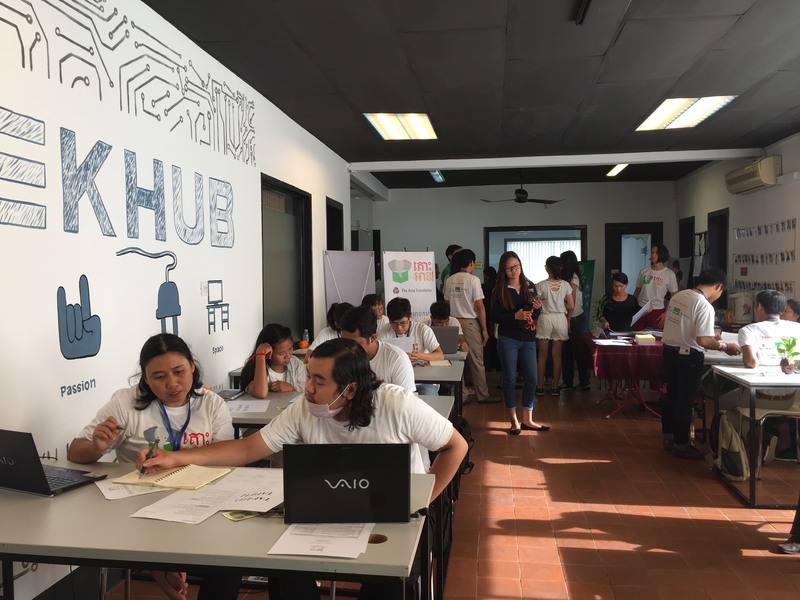
My role, as an editor from Pratham Books, was to offer editorial guidance over the 2-day event. I got the opportunity to discuss some of the key observations that we had made at Pratham Books while creating STEM-based picture books. In essence: what are the crucial things to bear in mind while creating STEM books for early readers, and what works. Here's what Melody Zavala (Director, Books for Asia) said about the hackathon, "The Asia Foundation uses 'e-book hackathons' to drastically reduce the time and resources needed to produce beautiful, illustrated children’s books on topics missing from the commercial market. We were thrilled to draw on Pratham Books’ experience with STEM titles. In Cambodia, only 3 percent of university students choose to study STEM subjects, according to the Ministry of Education, Youth & Sport. We hope this can be changed by stimulating interest at a young age through fun storybooks."
It was fascinating to watch writers and illustrators work so closely, constanly exchanging ideas and refining the narrative as they progressed. We watched as illustrators brought characters to life, developed storyboards along with their writers, and sketched eye-catching book covers. While the foundations of the book were being laid out, many fundamental questions were tossed around, which eventually helped each story evolve: Is the the title too revealing? Did the perspective of each illustration make sense? Is the illustration merely reflecting the text, or is there scope for additional detail?
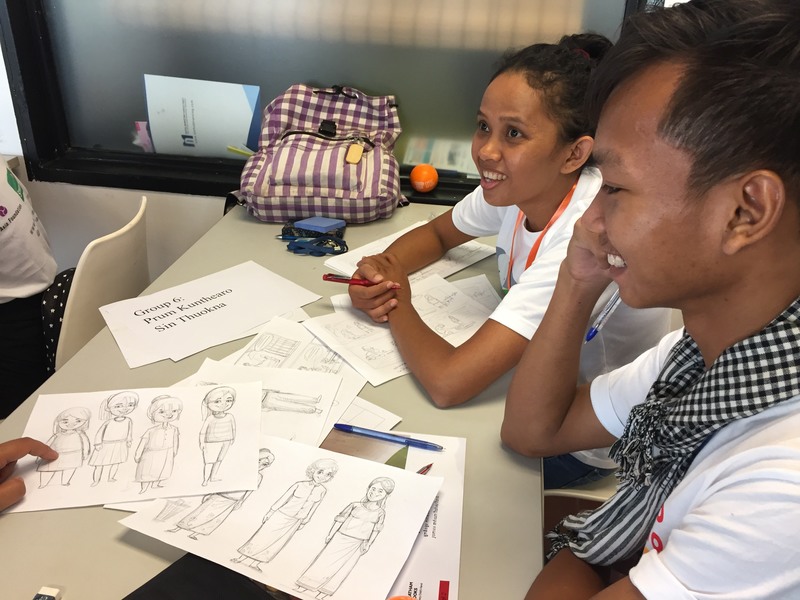
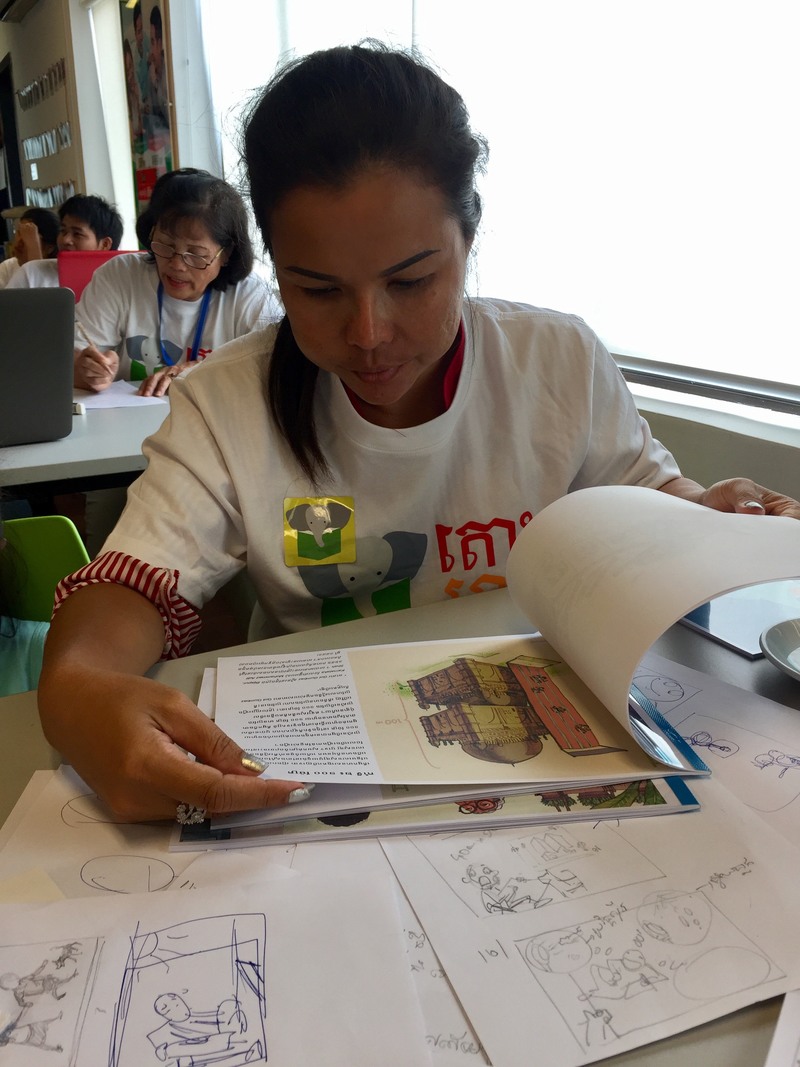
Interacting with an enthusiastic group of writers, editors, illustrators and designers gave me plenty of time to reflect on the entire book-creation process, and I returned home feeling rather inspired and rejuvenated. Helping create simple and fun STEM books at Pratham Books has been both challenging and full of discovery, so it was gratifying to be able to share those experiences with others who are also trying to make reading more inclusive. It was also heartening to see some of the Pratham Books titles being distributed at the event and that too, in their local language! The Asia Foundation team had translated several of our titles into Khmer. As a multilingual publisher, nothing gives us more joy!
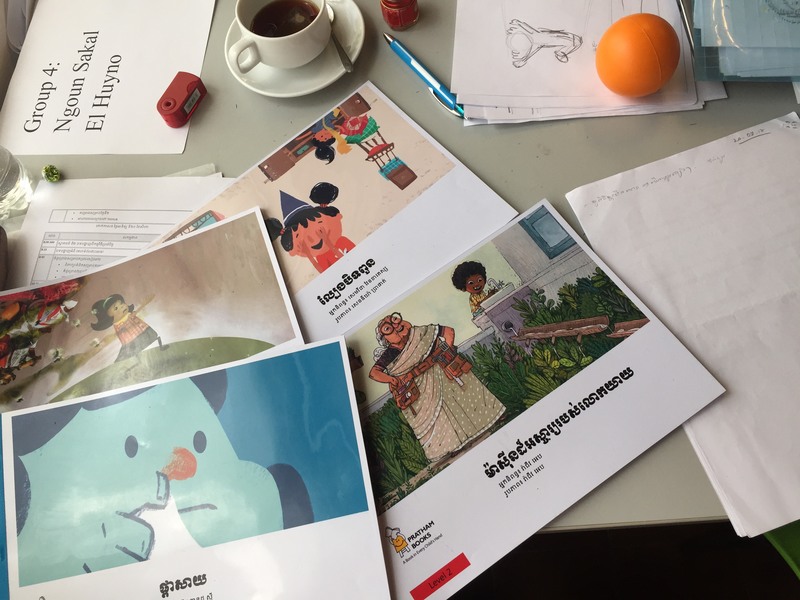
The 8 local-language books that were created during the 2-day Hackathon will soon be available for free on Let’s Read! - a digital platform that empowers underserved communities in Asia to build digital libraries in their own languages.
You can read more about the STEM hackathon here.
This post was written by Yamini, a Consultant Editor at Pratham Books who represented Pratham Books at the 'Let's Read! E-book Hackathon' in Cambodia.
Be the first to comment.